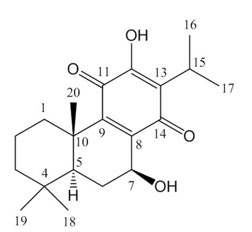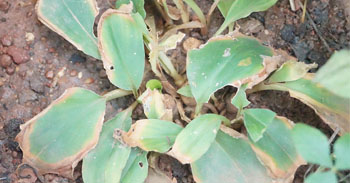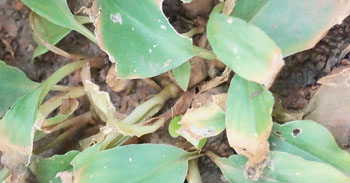KJC Medicinal Garden
Kachchura, Kachhoora
Kaempferia galanga
Order: Zingiberales
Family: Zingiberaceae
Genus: Kaempferia
Species: K. galanga
Common Names: Cekur,Kencur,Sand ginger,Aromatic ginger
Native to Indio-China(sub-tropical, terrestrial)
Other plants of the same genus with medicinal properties
-
Alpinia galanga
Alpinia zerumbet
Curcuma longa(turmeric)
Etlingera elatior(shell ginger)
Etlingera maingayi(malay rose)
Etlingera fulgens
Kaempferia angustifolia
Kaempferia rotunda
Zingiber cassumunar
Zingiber officinale(ginger)
- It is small and low growing herb
- Foliage: The plant typically consists of 2-3 broadly elliptical to suborbicular leaves which occur in a rosette.
- Leaves: They are held horizontally, close to the ground and are hairless on top.
- Stems: The rhizome or underground horizontal stem is white or yellowish, smells like camphor.
- Flowers: Inflorescence is composed of 4-12 white tubular flowers.
Uses in Tradition systems of medicine
- Kaempferia galanga and its constituents possess several pharmacological activities like antimicrobial, antioxidant, amebicidal, analgesic, anti-inflammatory etc
- It is highly used in Ayurveda
- It is used in traditional Chinese medicines to cholera, constipation. In Thailand it is used in treating menstrual disorder
- Indian Ayurvedic formulations such as Karpuardyarka, Karchuradichurna, Sutasekara rasa, Karchuratailam, and Nalpamaraditailam, used for the treatment of muscular swelling and rheumatism also consisting of KG rhizomes
- It is an important Indian medicinal herb that has a long history of use in the treatment of several kinds of human ailments including vata ailments like cough and cold, fever, headache, pains disorders, skin diseases, rheumatic diseases, arthritis etc
- Used as a herb in cooking in Indonesia
- A popular herbal drink in Jamu is made from it’s powder
- Minerals- Potassium, phosphorous and magnesium.
- High amount of Protein and fibre
Suggested Medicinal Properties
- Anti-inflammatory
- Antituberculosis
- Antifungal
- Antimicrobial
- Analgesic
- Antidengue
- Wound healing activity
- Amebicidal
- Anti nociceptive
- Anticancer
Active Phytochemicals
1. Diterpenoids:
Kaempferia plants were characterised with a predominance of diterpenoids especially the isopimaranes in addition to abeitane labdane and clerodane types.

a. Isopimarane type of diterpenoids
b. Abeitane type diterpenoids
c. Labdane and clerodane diterpenoids
2. Flavonoids
3. Phenolic compounds
4. Steroids and treterpenes
5. Volatile oils
References
https://pubmed.ncbi.nlm.nih.gov/32061673/
https://www.ncbi.nlm.nih.gov/pmc/articles/PMC6836233/

